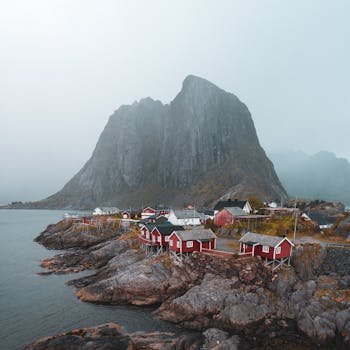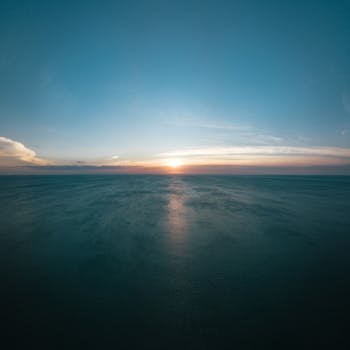Discovering Kaliningrad: Russia’s Unique Exclave
Have you ever heard of a place that belongs to one country but is surrounded by other countries? Welcome to Kaliningrad, a Russian exclave nestled between Poland and Lithuania on the Baltic Sea. This fascinating region boasts a rich and complex history, a blend of Russian and Prussian cultures, and a growing tourism scene. This article will guide you through everything you need to know about Kaliningrad, from its historical roots and must-see attractions to practical travel tips for planning your visit. Get ready to explore a hidden gem!
In this guide, we’ll cover:
- The captivating history of Kaliningrad, from its Prussian origins to its current status.
- The top attractions and landmarks that you absolutely can’t miss.
- Practical travel tips, including how to get there, where to stay, and what to eat.
- Insights into the local culture and customs.
A Journey Through Time: Kaliningrad’s Rich History
Kaliningrad’s story is one of dramatic shifts and cultural transformations. Understanding its past is crucial to appreciating its present.
From Königsberg to Kaliningrad: A Prussian Legacy
Originally known as Königsberg, the city was founded in 1255 by the Teutonic Knights. For centuries, it served as the capital of East Prussia and a major center of German culture. It was the birthplace of the philosopher Immanuel Kant and a significant hub for trade and education. The city thrived as a member of the Hanseatic League, a powerful medieval trading network that controlled much of Northern Europe’s commerce. Königsberg’s architecture reflected its Prussian heritage, with grand cathedrals, imposing castles, and charming cobblestone streets.
Fun Fact: Immanuel Kant, one of history’s most influential philosophers, lived his entire life in Königsberg, never traveling more than 60 miles from the city!
World War II and the Soviet Era
World War II dramatically altered Kaliningrad’s fate. In 1945, the city was heavily bombed and captured by the Soviet Union. The Potsdam Agreement officially transferred the northern part of East Prussia, including Königsberg, to Soviet control. The German population was largely expelled, and the city was renamed Kaliningrad in 1946 in honor of Mikhail Kalinin, a Soviet revolutionary. The city was rebuilt as a Soviet city, with many of the old Prussian buildings replaced by Soviet-style architecture. For decades, Kaliningrad was a closed military zone, restricting access to foreigners and shaping its development.
Statistic: The population of Königsberg before WWII was approximately 370,000. After the war, the German population was almost entirely replaced by Soviet citizens.
Kaliningrad Today: A Russian Exclave
Following the collapse of the Soviet Union in 1991, Kaliningrad became a Russian exclave, geographically separated from the rest of Russia. This unique situation has presented both challenges and opportunities. The region relies on transit agreements with Lithuania and Poland for access to the rest of Russia. Today, Kaliningrad is a vibrant city with a growing economy and a renewed interest in its history. The city is striving to balance its Soviet past with its Prussian heritage, attracting tourists and investors alike. It is also a strategically important port for Russia, providing access to the Baltic Sea.
Must-See Attractions in Kaliningrad
Kaliningrad offers a diverse range of attractions, from historical landmarks and museums to natural wonders and modern entertainment.
Königsberg Cathedral: A Symbol of Resilience
The Königsberg Cathedral, now known as the Kaliningrad Cathedral, is perhaps the most iconic landmark in the city. Originally built in the 14th century, it was heavily damaged during World War II but has been painstakingly restored. Today, it houses a museum, a concert hall, and the tomb of Immanuel Kant. Climbing the tower offers panoramic views of the city and the Pregel River.
Tip: Check the concert schedule before your visit. The Cathedral regularly hosts classical music performances.
The Curonian Spit: A UNESCO World Heritage Site
Just a short drive from Kaliningrad is the Curonian Spit, a narrow, 98-kilometer-long sand dune shared by Russia and Lithuania. This UNESCO World Heritage Site is a breathtaking natural wonder, with towering dunes, pine forests, and pristine beaches. It’s a perfect place for hiking, birdwatching, and enjoying the stunning scenery. Be sure to visit the Dancing Forest, a section of pine trees that have twisted and curved in unusual shapes.
The Museum of the World Ocean: A Maritime Adventure
The Museum of the World Ocean is a unique and fascinating museum dedicated to the exploration of the world’s oceans. It features a collection of research vessels, submarines, and maritime artifacts. You can even explore a real submarine, the B-413, and learn about the life of submariners. The museum also has exhibits on marine biology, oceanography, and the history of shipbuilding.
The Fishing Village: A Taste of Old Königsberg
The Fishing Village (Rybnaya Derevnya) is a modern architectural complex designed to evoke the atmosphere of old Königsberg. It features charming buildings, restaurants, cafes, and shops. It’s a great place to stroll along the riverbank, enjoy a meal, and soak up the atmosphere. The Honeymoon Bridge, with its love locks, is a popular spot for couples.
Planning Your Trip to Kaliningrad: Practical Tips
Getting to Kaliningrad and navigating the region requires some planning due to its unique geographical situation.
Visa Requirements and Entry Procedures
Since Kaliningrad is a Russian exclave, you’ll need a Russian visa to visit, unless you are eligible for the e-visa program. The e-visa allows citizens of certain countries to enter Kaliningrad for tourism, business, or humanitarian purposes for a limited period. Check the latest visa regulations on the official website of the Russian Ministry of Foreign Affairs. Applying for a visa can take time, so start the process well in advance of your trip.
Getting There: Flights, Trains, and Buses
Kaliningrad has an international airport (Khrabrovo Airport), with direct flights from several European cities and Moscow. You can also reach Kaliningrad by train from Moscow and other Russian cities, but this requires a transit visa for Lithuania or Belarus. Bus services connect Kaliningrad with neighboring countries like Poland and Lithuania, offering a more affordable option.
Accommodation: Hotels and Apartments
Kaliningrad offers a range of accommodation options, from budget-friendly hostels to luxury hotels. Many hotels are located in the city center, within walking distance of the main attractions. Apartments are also a popular choice, offering more space and flexibility. Booking in advance is recommended, especially during peak season. Consider staying near Victory Square for easy access to transportation and amenities.
Local Cuisine: What to Eat and Drink
Kaliningrad’s cuisine reflects its diverse cultural influences, blending Russian, German, and Lithuanian flavors. Be sure to try the local specialties, such as Königsberger Klopse (meatballs in white sauce), Stroganina (thinly sliced frozen fish), and various seafood dishes. Amber-infused vodka and local beers are popular drinks. Many restaurants offer traditional Russian dishes like borscht and pelmeni.
Experiencing the Local Culture
Immerse yourself in Kaliningrad’s unique culture by interacting with locals and exploring beyond the typical tourist spots.
Language and Communication
Russian is the official language of Kaliningrad. While some people may speak English, especially in tourist areas, it’s helpful to learn a few basic Russian phrases. A phrasebook or translation app can be invaluable. Don’t be afraid to try your Russian, even if it’s not perfect. Locals appreciate the effort.
Festivals and Events
Kaliningrad hosts several festivals and events throughout the year, showcasing its culture and traditions. The Baltic Sea Cultural Festival, held in the summer, features music, dance, and theater performances. The Amber Festival celebrates the region’s amber industry, with exhibitions, workshops, and markets. Check the local event calendar to see what’s happening during your visit.
Respecting Local Customs
When visiting Kaliningrad, it’s important to be respectful of local customs and traditions. Dress modestly when visiting religious sites. Avoid loud or disruptive behavior in public places. Tipping is generally not expected, but it’s always appreciated for good service. Learning a bit about Russian etiquette can go a long way in making a positive impression.
Conclusion: Unveiling the Secrets of Kaliningrad
Kaliningrad is a truly unique and fascinating destination, offering a blend of history, culture, and natural beauty. From its Prussian roots to its Soviet past and its current status as a Russian exclave, Kaliningrad has a story to tell. Whether you’re interested in exploring historical landmarks, relaxing on the beaches of the Curonian Spit, or immersing yourself in local culture, Kaliningrad has something for everyone.
Ready to plan your own adventure to Kaliningrad? Start researching flights and accommodation options today, and prepare to discover the secrets of this hidden gem. Don’t forget to check visa requirements and pack your sense of adventure!
What are you waiting for? Kaliningrad is calling!









